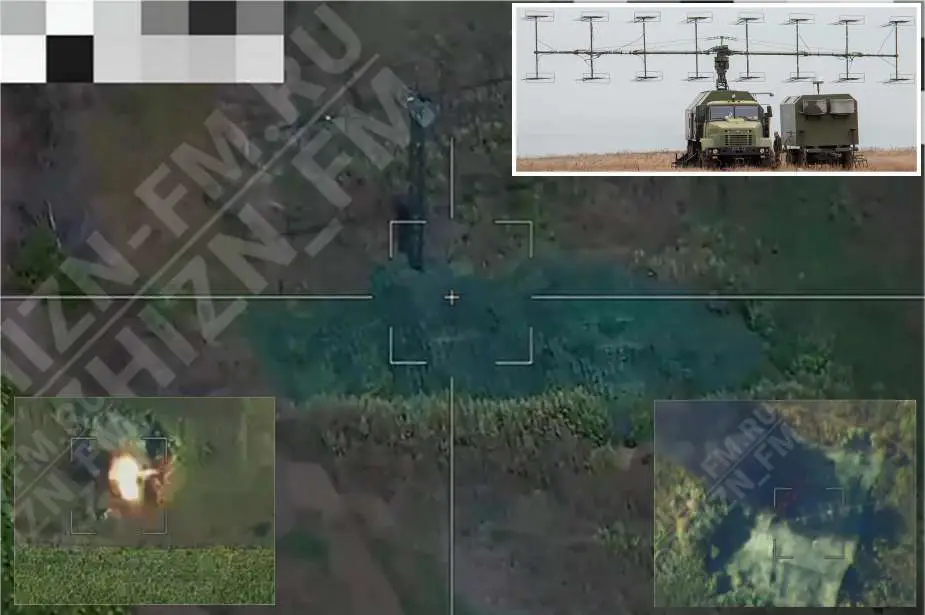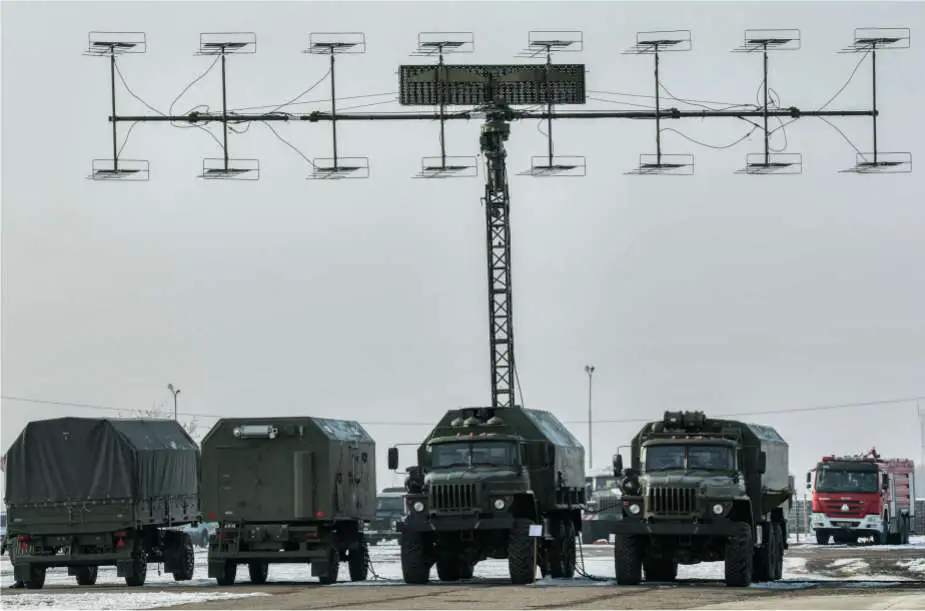- Army
- Conflicts in the world
- Israel - Iran conflict 2025
- Pakistan - India Conflict 2025
- Russia Ukraine War 2022
- Libya conflict day by day
- HAMAS - Israel War 2023
- Operation Serval in Mali French Army
- Sangaris operation Central African Republic
- Sangaris opération militaire République Centreafrique
- Ukraine - Russia conflict
- Syria conflict news
- Defence & Security Industry Technology
- Armies in the world
- Analysis Defense and Security Industry
- Conflicts in the world
- Navy
- Air
Russian Forces destroy Ukrainian crucial P-18 early warning radar
According to reports on Telegram dated August 26, 2023, Russian soldiers employed a Zala Aero Lancet loitering munition to destroy a Ukrainian P-18 Malakhit radar situated near the Chuguevo settlement in the Dnipropetrovsk region, Ukraine. The P-18 radar system, integral to the air defense infrastructure, is capable of detecting and tracking aerial threats, including missiles, at distances of up to 300 km, with the ability to identify targets flying at altitudes up to 35 km.
Follow Army Recognition on Google News at this link

Russian Forces destroy Ukrainian crucial P-18 early warning radar with a Lancet loitering munition (Picture source: Telegram and Yandex)
The ZALA Lancet, introduced by Russia's ZALA Aero Group in 2019, serves as both an Unmanned Aerial Vehicle (UAV) and a loitering munition, designed for reconnaissance and offensive operations. It features optical-electronic and TV guidance systems, facilitating precise control during its terminal flight phase. Additionally, the UAV integrates intelligence, navigation, and communication modules, enhancing its operational capabilities.
A notable feature of the Lancet UAV is its "air mining" capability, allowing it to descend rapidly at speeds of up to 300 kilometers per hour, potentially neutralizing enemy Unmanned Combat Aerial Vehicles (UCAVs) during flight. With a range of 40 kilometers and a takeoff weight of 12 kilograms, the drone can accurately deploy high-explosive or HE-fragmentation warheads, providing strategic utility within the Russian military.
The updated variant of the Lancet, known as the Izdelie-53, has gained prominence. It includes a tube launcher capable of deploying multiple drones and an advanced communication system that supports autonomous targeting and coordinated attacks. In response to increased deployment in Ukraine, Russia has scaled up its Lancet drone production threefold to meet military requirements.
During the period surrounding the dissolution of the Soviet Union, Ukraine maintained a network of five radio engineering brigades, which comprised 30 radio engineering battalions and 56 distinct radio engineering companies. Over time, the radio engineering units embarked on modernization efforts. Outdated radar models such as P-12, were phased out gradually due to factors including cost and mobility considerations. The focus shifted towards upgrading existing systems like the P-18, with the aim of extending their operational lifespan and enhancing their capabilities.
The P-18 radar, designated as the 1RL131 Terek, was introduced in 1970 during the Soviet era. It brought several improvements over its predecessor, the P-12, to enhance overall air surveillance and reliability. These improvements included automatic frequency control, a moving target indicator to counter jamming, and the ability to display tracks from collaborating radar systems.
The P-18 radar is designed for both independent use and integration into air defense systems. This adaptability allows it to operate alone or as part of larger command, control, and communication (C3) structures. Its primary function is to detect and track airborne objects, contributing to early warning systems and aiding in target tracking. The radar's antenna comprises sixteen vertically stacked Yagi antennas arranged in sets of eight, enabling efficient scanning and precise target tracking.
The radar offers comprehensive coverage with a 360-degree azimuth scan rotating at 10 revolutions per minute. Adjusting the antenna's height and elevation during operation enhances scanning capabilities. The elevation range from -5 to +15 degrees ensures thorough airspace surveillance.
The P-18 incorporates a secondary Identification Friend or Foe (IFF) radar system for identifying aircraft nationality. Operating in the Very High Frequency (VHF) spectrum, the system can detect targets up to 250 km away and at altitudes of up to 35 km. Its range measurement precision is around 1 kilometer, with a power output of 260 kilowatts for effective surveillance.

The P-18 radar can adjust the height of its antenna to enhance scanning capabilities (Picture source : Yandex)
Modernization efforts for the P-18 radar focus on performance enhancement and extended operational life. Upgrades include solid-state transmitters and receivers, anti-jamming equipment, and advanced signal processing systems. In Ukraine, these initiatives result in upgraded variants like P-18MA, P-18MU, and P-18 Malakhit, with a focus on improving digital signal processing, interference resistance, and target tracking accuracy.
On January 4, 2012, the P-18 Malakhit radar station was integrated into the Ukrainian Armed Forces, intended to replace outdated radar systems. The P-18 Malakhit mobile radar system represents an improved iteration of the P-18MU Terek radar, offering enhanced coordinate accuracy, resistance to interferences, greater reliability, extended service life, and alignment with contemporary operational needs.
The Malakhit incorporates digital signal processing and automated data transmission capabilities, allowing real-time precise coordinate determination (range, azimuth, altitude, velocity, and course) and automatic data transmission about tracked targets, even when contending with disruptive technologies.
Significantly, the modernized station is notably smaller than its predecessor, featuring an antenna mounted on a single KRAZ vehicle chassis, two compact diesel power units, and a hardware station on a vehicle trailer, contrasting with the P-18MU Terek radar, which requires two trucks and two trailers.
Throughout its development, considerations encompass digital signal processing, active interference mitigation, radar data processing, digital target tracking, and speed determination. The system facilitates automatic data transmission and incorporates transistor transmitters. Industrial computers and video monitors are integrated into the digital processing and display system to detect and encode incoming signals. Marks on the monitor enable monitoring of target movement amidst various interferences, offering operational mode control, performance assessment, and simulated training for personnel.
The P-18 Malakhit radar station can track objects with speeds of up to one thousand meters per second and can process up to 256 targets in automatic mode. Airborne targets such as MiG aircraft flying at about 10 kilometers can be detected at distances of approximately 300 kilometers. Objects at lower altitudes can be detected from distances of 100 kilometers. The deployment of the station with a five-person crew takes roughly an hour.


























